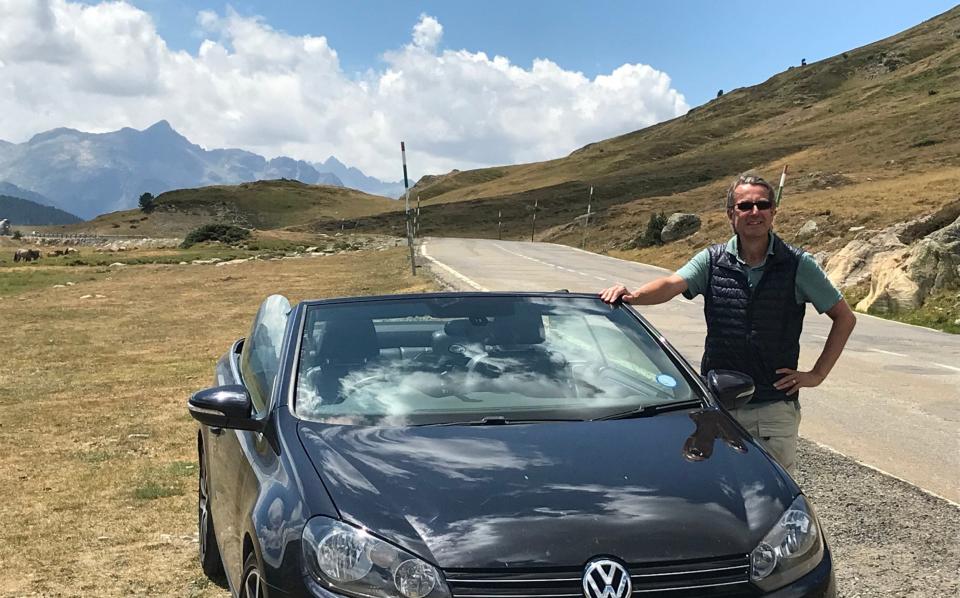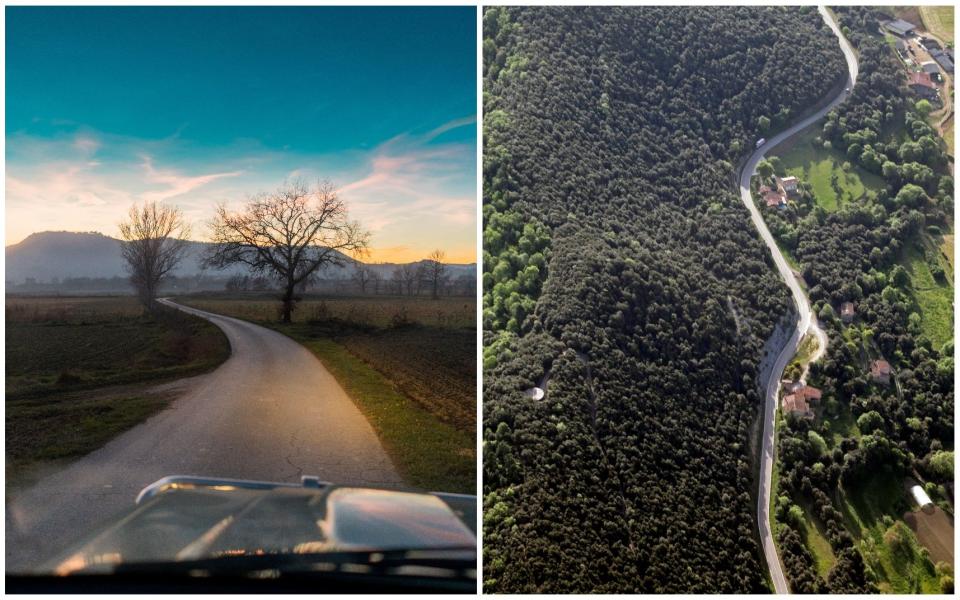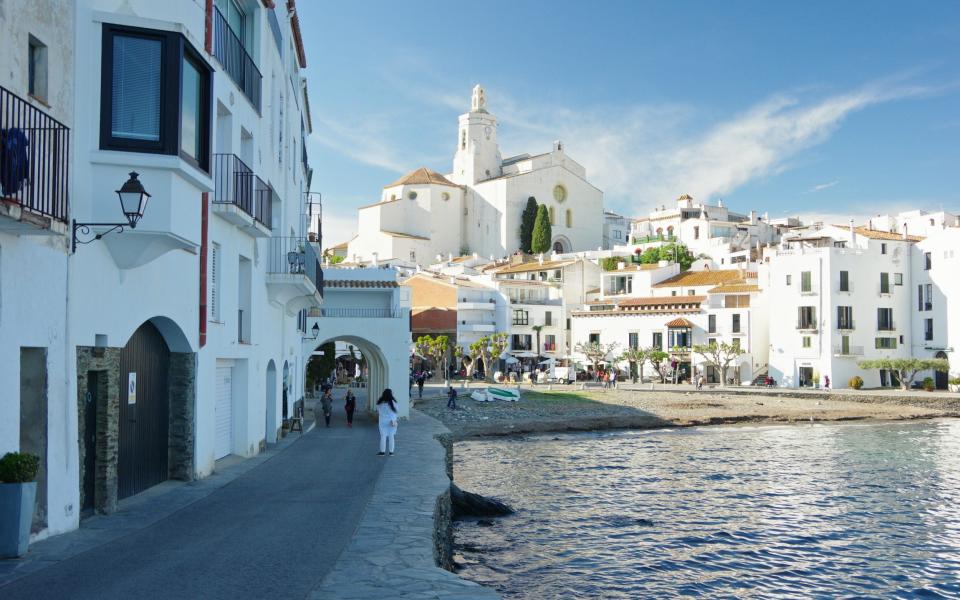I discovered Europe’s greatest road trip – and it isn’t in the Alps

Behind us, a lowering sun and the peaks of the Pyrenees. Up ahead, glimpses of valleys and vineyards. Anticipation of pleasures including the lush volcanic terrain of La Garrotxa, encounters with Salvador Dalí, the sights and scents of the Med occupy our thoughts.
My wife and I love a good driving holiday. We love the freedom to be able to stop where and when we choose, and how the car is the constant in a whirl of changing scenes and sensations. Some of our most meaningful conversations have taken place on the road.

Our car – a convertible Volkswagen Golf – cries out for mountain roads in summer, and so our interest was piqued when we heard of a new way of exploring this dramatic part of the world. This is the Grand Tour of Catalonia, devised by the tourist authority and aimed at encouraging travellers to go beyond the hotspots of Barcelona and the Costa Brava. Those that do are promised some of the region’s lesser-known treasures – cultural, gastronomic, geological – while driving along a network of local roads offering spectacular vistas.
In its entirety, the route, which begins and ends in Barcelona, covers just over 2,000km (1,243 miles). It is split into five stages, each highlighting different aspects of Catalonia, from its culinary creativity to its striking scenery. To do it all, you would need three to four weeks, but it is easily tackled in stages.
We found ourselves at the northeastern tip of Catalonia in the town of Vielha on our first day, up at the top of the Val d’Aran, a long valley famed for its distinctive stone villages. Our base was the Parador de Vielha, one of the collection of government-run properties located in distinctive buildings and settings all over Spain – in this case on a hill above town. In the distance, the peaks above Baqueira Beret, Spain’s most celebrated skiing area.
We wanted to explore the Val d’Aran before setting off – in particular the villages of Arties and Salardu, complete with Romanesque churches and towers dating back to the 11th and 12th centuries. Also on our list was the Vall de Boi, gateway to the Parc Nacional d’Aigüestortes, a treasure trove of forests, alpine pastures and lakes. As we strolled and took in the brilliant blues, more intrepid travellers hiked, biked, paddle-surfed and scaled sheer rock faces around us.

We saluted their endeavours, and later toasted them during the course of a nighttime trawl of Vielha’s tapas bars, tucking into boquerones fritos (fried anchovies) and berberechos vapor (steamed cockles), washed down with local cava.
A high point – literally – came on the third day, up in the lofty pastures of Baqueira Beret, where we gasped at the panorama of peaks, which, come winter, would be criss-crossed by skiers. Cars here were few and far between, but we were, however, stopped in our tracks by the unforgettable sight of a herd of wild horses crossing the road.
As we began the slow descent to warmer climes, our destination was La Seu d’Urgell, a town on the the Segre and Valira rivers, framed by the Cadi mountain range. A gateway to Andorra, La Seu is home to a truly stunning Romanesque cathedral – the only one in Catalonia – which takes pride of place in a complex containing a basilica, cloisters and a museum of sacred art and golden treasures. We sipped cortados in a tree-lined square close to the town’s medieval heart, a short stroll from our quarters in another parador, this one built around its own 18th-century cloister.

No matter how enchanting the stops, driving holidays inevitably involve… well, driving. For us, the optimum amount of driving for any one day was about four and a half hours. All that time behind the wheel can wear thin, but here, at least, perseverance pays off. The stretch between La Seu d’Urgell and La Vall d’en Bas was one of those rewards: one late afternoon, the winding roads were almost completely clear, the mountain panoramas spellbinding. The sharp bends required full concentration, but if you enjoy driving, this is heaven.
We spent the night in a traditional farmhouse, offering a rustic retreat and a base from which to explore La Garrotxa, the most extensive volcanic terrain on the Iberian Peninsula. There are a number of excellent walking trails through what is surprisingly green terrain (the volcanoes are long dormant) and there’s also a brilliant new museum of volcanology in the elegant old city of Olot, where Catalan – not Spanish – flags flutter in the breeze.
The following night was spent in Figueres, birthplace of Salvador Dalí. It is home to many of his most celebrated sculptures, paintings and collages, such as the Mae West Lips Sofa and the Galatea of the Spheres, a signature depiction of his wife and muse, Gala. A cardboard statue of the man himself – complete with moustache – greeted us as we pulled up at the Duran, a hotel full of old-world charm and a great favourite of the artist himself.

On day six, we headed east to the former Benedictine Monastery of Sant Pere de Rodes, high in the hills of the Cap de Creus Natural Park, just north of the picturesque seaside town of Cadaqués. The air was dry, the colours vivid, the heat intense, the sound of crickets almost deafening. And then, in a gap through the pine trees, we saw it: the Mediterranean, the dazzling, shimmering, wonderful sea, at last within touching distance. We’d come a long way to see this. After all, this is a drive where perseverance pays off.
Essentials
Adrian Bridge was a guest of the Catalonia - Catalan Tourist Board. For details of the Grand Tour of Catalonia, visit grandtour.catalunya.com/en
Getting there: Catalonia is accessible by ferry, via France or northern Spain; book crossings from the UK at discoverferries.com. Alternatively, fly to Barcelona or Girona and hire a car. The best time to drive in Catalonia is between spring and autumn, the latter offering brilliant colours.
Where to stay: Parador de Vielha (paradores.es) has doubles from €112, room only. Parador de La Seu d’Urgell has doubles from €87, room only.


